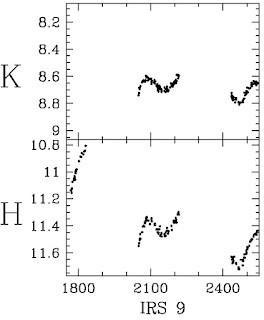American Idol, Landfills, and Juvenile Justice
Alright, I confess. I'm an American Idol fan. I'm all about the brainrot. It's pathetic, I know, but what's even more pathetic is that I don't even own a television and I watch a taped version of the Tuesday night show on Wednesday evenings. Last night's show revolved around "Idol Gives Back," this "big" war-against-poverty campaign they're doing. The big thing they kept mentioning is how for each vote, NewsCorp was going to donate $0.10, for up to five million dollars. They never really said where the money was going, except that it was to *gasp* Save Lives! Also nevermind that this is freaking NewsCorp and five million dollars is barely a drop in the bucket, if that. It probably did do some good and made a lot of people feel warm and fuzzy inside, so I can't complain too much.
So, last night, instead of forcing us to watch Bono "coach" the contestants (oh God thank you for sparing us that pain), we got to see a bunch of short segments of the host and the judges going around the US and Africa. The parts from Africa were ... familiar. (Nevermind that they never told us where in Africa they were; it's one big homogenous place, so it must not really matter anyhow. And while they did talk about how horrible of a disease malaria is, they didn't mention AIDS even once. American Idol is a family show, after all.) But, yes, the shots of people walking through landfills and of large groups of orphans happily eating in large bare rooms... it was a total deja vu, except the grinning kids in the video had darker skin that the ones in my memory.
In August 2005, in the middle of a month-long trip through southeast Asia, my father and I found ourselves in Phnom Penh, the capital of Cambodia. (If you don't know anything about Cambodia, quit being ignorant and go check out the wikipedia article or something. Especially the parts about the Khmer Rouge and Angkor.) We knew that Phnom Penh was going to be horrible, the worst combinations of a large dirty city and abject poverty in a country still recovering from large-scale genocide. Cambodia's tourist attractions are are elsewhere, and we were only in its capital out of necessity. My father's all-too-natural solution was to spend our one full day in town visiting the dump.


My dad actually got really excited by the entire experience. One thing we noted is that their computers were all really old and crappy; they had about ten, but only one or two would ever work at a time. My dad thought, "I have a lot of friends; we could easily get dozens of nice computers here." So he tried to help, to forge a bond, but apparently Mech just quit responding to his emails, the last I heard. I personally found the entire experience depressing rather than invigorating; it is difficult to see people making so much out of so little and not feel guilty for making so little out of so much opportunity in my own life. I'm still naive and idealistic; instead of seeing one potentially solvable situation, I see a whole helpless world full of Things That Should Not Be. In my head, I know what the world should be like, but the real world around me is so different that it's overwhelming to know how to go about fixing it. Well, there's that, and the fact that I'm incredibly cynical and impatient and people annoy me.
My father, you see, is different. (It takes a special kind of person to decide to visit the Phnom Penh dump on a tour of southeast Asia, yes?) He was a high school guidance counselor for almost 30 years, and somewhere along the way got involved with a volunteer organization associated with the state's Department for Juvenile Justice. Whereby "involved with," I really mean "founded," and whereby "Department for Juvenile Justice," I'm referring to "juvy," the prison where kids under 18 go. My strongest memories of Christmas morning when I was a kid don't center around getting up at the crack of dawn to run downstairs and see what presents I got; they revolve around getting up before the crack of dawn to drive out to DJJ to hand out bags of Christmas gifts to the teenage inmates there—gifts like pads of paper, pre-stamped envelopes, an orange, and a toothbrush. Since his retirement my senior year of high school, my father has poured himself into running this multimillion dollar philanthropic adventure. Explaining everything they do would require a whole other post, not to mention actually listening when he's going on about all of it on the phone.
My father's philosophy is that charity has its limitations; money can only go so far, and if you actually want to make a difference, then you need to actually do something. Charity is trying to treat symptoms ("we need to feed these hungry children!"), while philanthropy is trying to cure the cause ("we need to help these children's parents feed them!"). Charity makes people feel all warm and fuzzy inside; it has immediate gratification and results, and it's easier, but it the results aren't lasting. Philanthropy, on the other hand, is hard. Philanthropy requires thought, action, and inspiration in additon to mere money. It's one thing to give incarcerated kids prestamped envelopes, but it's something all together to try to change their lives and keep track of them so that when they get out of jail they don't go back to their old (criminal) habits upon returning home.
This is part of what has me cynical about the whole "Idol Gives Back" nonsense. I'm not saying it's bad; I'm saying it sounds like it isn't going to be as effective and useful as it could be. Money going to food doesn't solve problems; it merely postpones them until the next meal, while teaching people that they don't have to work for what they get. In Africa, wouldn't the money be better spent teaching safe sex and supplying condoms so fewer unwanted kids are born? Shouldn't we be trying to attack the problems instead of simply making ourselves feel better?
And, yes, I was glad to see Sanjaya go.










